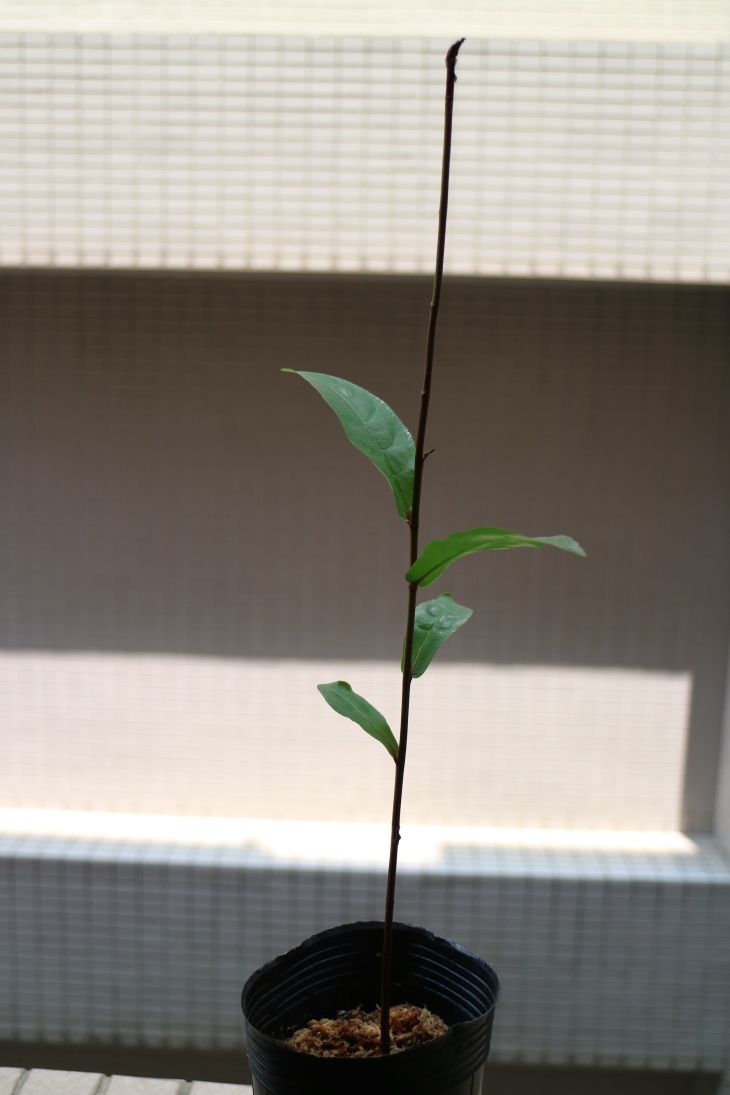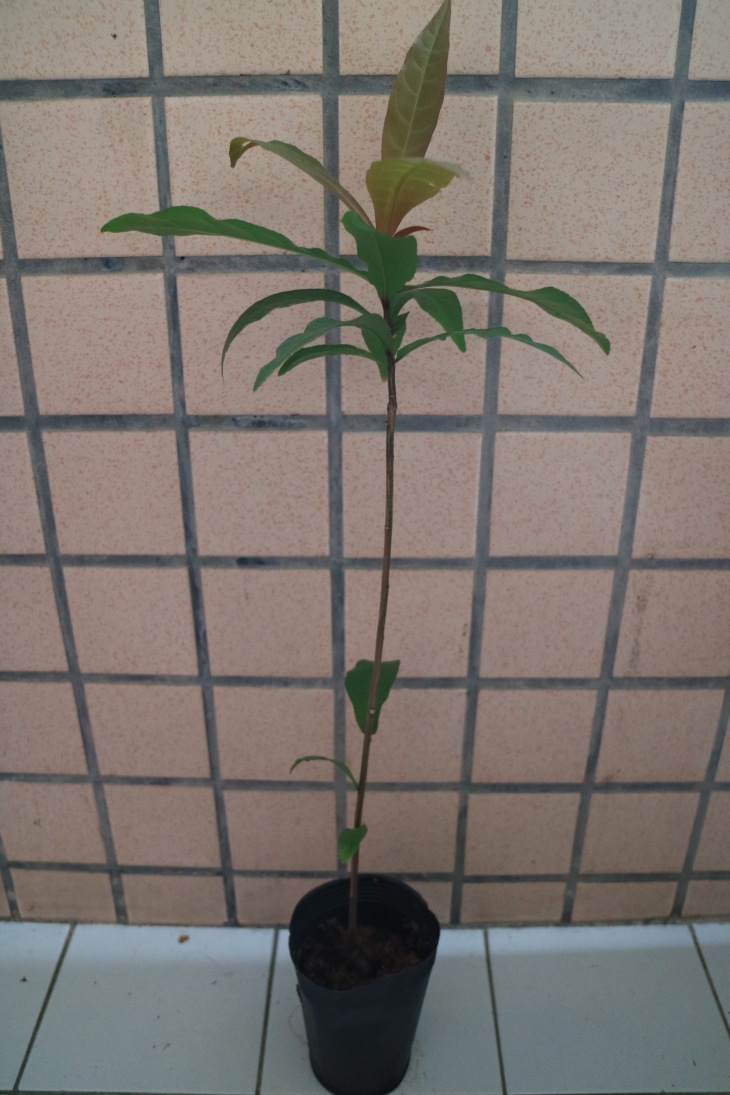Common Names: Poeierkwasboom (Afrikaans), Common Putat (English), Putat Sungei (Malay), সমুন্দরফল (Bengali), จิกสวน (Thai), サガリバナ (Japanese), 玉蕊/水茄苳/穗花棋盤腳 (Chinese)
Scientific Name: Barringtonia racemosa (L.) Spreng.
Family: Lecythidaceae
Natural Distribution: South Africa (KwaZulu-Natal), Mozambique, Tanzania, Somalia, Madagascar, Seychelles, India, Sri Lanka, Andaman and Nicobar Islands, Southeast Asia, Southern China (including Hainan Island), Ryukyu Island (Southward starting from Amami Islands), Taiwan, Micronesia, Melanesia, Polynesia, Northeastern Australia
Natural Habitat: Tropical and subtropical coastal and mangrove forests
Description: Evergreen tree usually around 10m tall at most. Alternate obovate-oblong simple leaves are glossy when mature, can grow up to 35cm long and about 15cm wide, and is pointy at the tip. The red new shoots are papery, gradually growing greener glossier. Leaves crown at the tip of branches.
Flower: Axillary inflorescence in the form of pendulous raceme. In summer the plant begins to bloom attractive whitish to pale pink bisexual flowers (4 red sepals, 4 pale pink petals and lots of whitish to pale pink stamens). Peduncle can reach 80cm. The nectar attracts pollinators including moths and bats.
Seeds: Oval-shaped fruit is light brownish with creases (from the lobes of flower). The fibrous outer coating makes the seed buoyant. The single seed inside the fruit is recalcitrant (but the seed can still germinate after months in the sea). Quite some number of fruits are seedless. Sometimes the ripe fruit stays on the tree for a long time, but most fruits mature and drop during the first few months of the year.
This is a very widespread species. They are dispersed by water, such as the sea or river. In their natural distribution, seedlings can be found on beach shores. They can tolerate saline soils but probably grow best along freshwater rivers.
 2018/01/25, this is one of the 2 Barringtonia racemosa seeds I have planted. The medium I used was clay soil and potting mix (about 1 to 1). I left some Sphagnum moss on top just in case the top dried out. I heard that this species loves it moist so I watered it everyday.
2018/01/25, this is one of the 2 Barringtonia racemosa seeds I have planted. The medium I used was clay soil and potting mix (about 1 to 1). I left some Sphagnum moss on top just in case the top dried out. I heard that this species loves it moist so I watered it everyday.
I lost the photo of the fruits and seeds so I will explain in words. When I first got the fallen fruits (one was bitten by squirrels but the bite mark didn’t penetrate to the seed so I thought that the seed might still be viable), I placed them in water and changed the water for about 2-4 weeks (I can’t really remember). Then in mid January when the outer coat was soft enough, I peeled it until I got the seeds. I could have cut it open in the first place but because I am clumsy and often cut too hard, and I didn’t know if cuts and pricks on the seed will result in loss in viability so I chose to stay safe. I then placed the seeds in Sphagnum moss (temperature was about 24˚C/75.2˚C and humidity was about 80%). The seed germinated within a week, with the bud on the top of the seed and 3 or so root structures at the bottom of the seed. After 3 days, I decided to plant the seeds in pots because the roots were growing fast.
 2018/05/16, a relatively hot day, this Barringtonia plant is about to grow new leaves at the top. The temperature in May is constantly around 27˚C/80.6˚F and with humidity of over 60%, so as long as the soil is kept moist, the plant should thrive.
2018/05/16, a relatively hot day, this Barringtonia plant is about to grow new leaves at the top. The temperature in May is constantly around 27˚C/80.6˚F and with humidity of over 60%, so as long as the soil is kept moist, the plant should thrive.
It is winter in the Northern Hemisphere, and the plant was still growing pretty fast in February. I placed them indoors in case the wind outside and the cold will damage the seedling. Indoor temperature was about 15˚C/59˚C and the humidity was around 60-70%. In March, the temperature started to warm again, and both Barringtonia plants have reached over 40cm tall and finally grew some leaves. I decided to move them outdoors again. In April (like my jackfruit and rubber tree), the seedlings experienced dry soil as I wasn’t around to water them, but to my surprise they were growing as usual.

The plants are actually growing so fast (kind of expected because I am growing a native). I will definitely require a bigger pot in 2019. The roots are all poking out of the draining holes of the pot. I might leave one in the pot and change the other one in a bigger pot and see how much slower the plant in the original pot will grow (or maybe it will start to struggle).

I heard that this species can begin to flower at a very young age. I hope in a few years time I will be able to see the plants bloom!